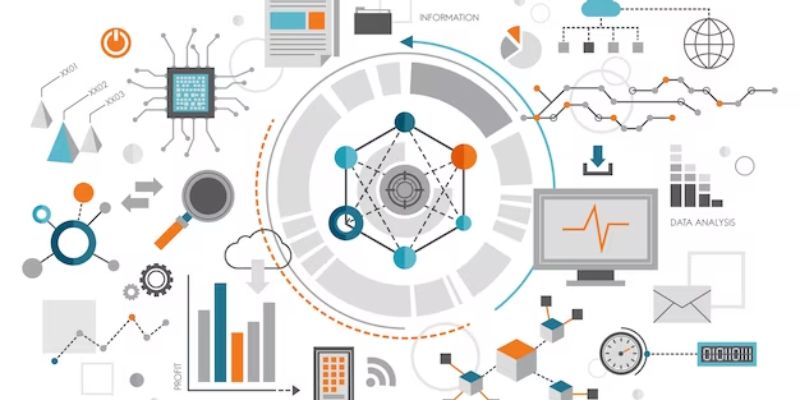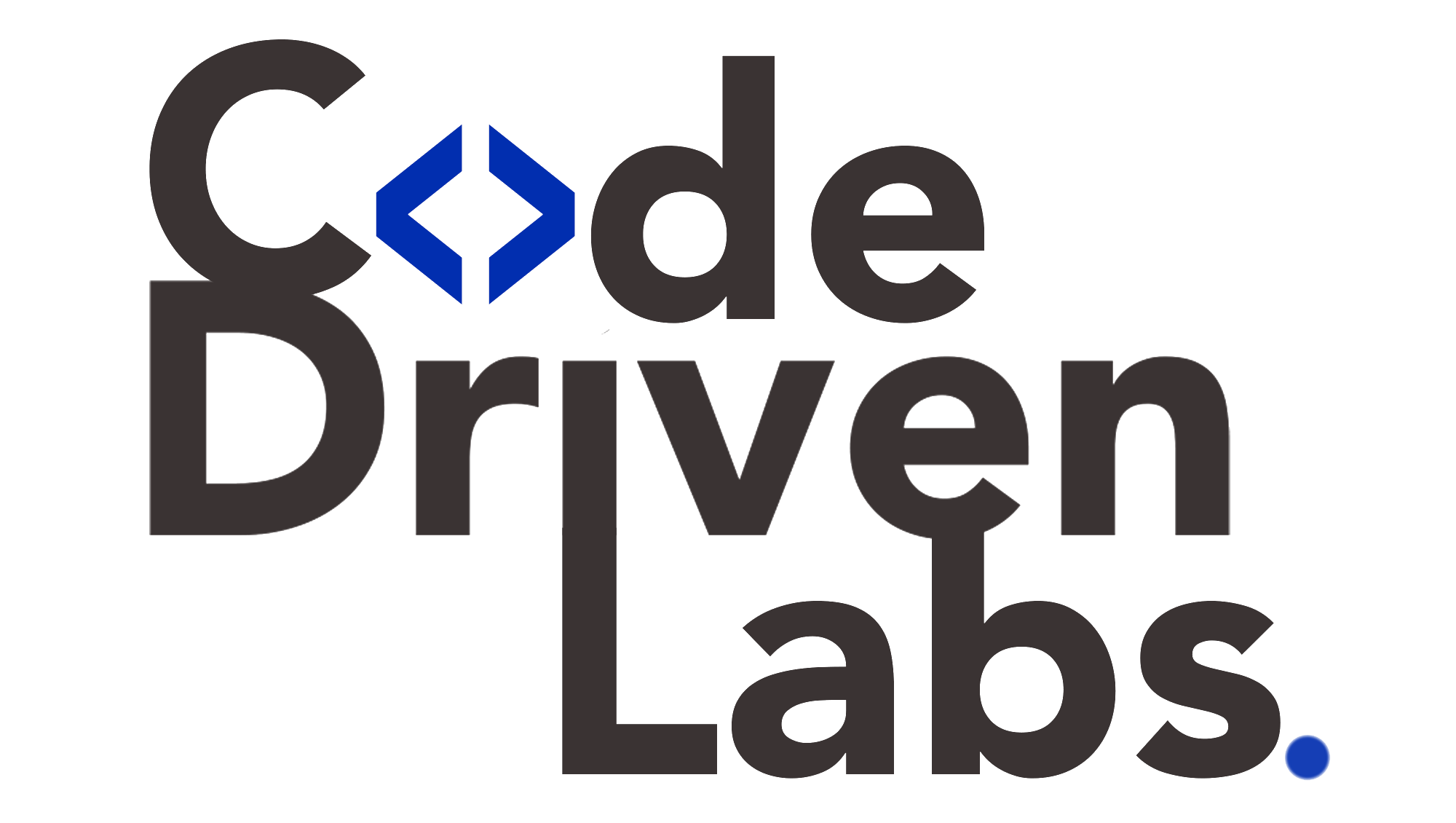Level up your business with US.
- Home
- Education Analytics: Improving Student Outcomes with Data Science
Education Analytics: Improving Student Outcomes with Data Science
June 20, 2025 - Blog
Education Analytics: Improving Student Outcomes with Data Science
In today’s fast-evolving digital age, data is not just a tool for business intelligence—it has become a cornerstone in reshaping the education landscape. Education analytics, powered by data science, is enabling schools, universities, and edtech platforms to better understand learner behavior, improve academic performance, and make data-driven decisions that boost student success. From predicting dropouts to personalizing learning experiences, data science is revolutionizing education at every level.
This blog explores how education analytics is improving student outcomes and highlights how Code Driven Labs helps educational institutions leverage data science for measurable success.

Understanding Education Analytics
Education analytics involves the systematic collection, processing, and analysis of educational data to uncover insights that inform teaching strategies, administrative decisions, and learning outcomes. It applies statistical models, machine learning, and data visualization to datasets such as attendance records, grades, learning management system (LMS) activity, assessment scores, and even socio-emotional feedback.
There are four main categories of education analytics:
-
Descriptive Analytics – What happened? (e.g., average student performance across classes)
-
Diagnostic Analytics – Why did it happen? (e.g., identifying causes of low test scores)
-
Predictive Analytics – What is likely to happen? (e.g., predicting student dropout risk)
-
Prescriptive Analytics – What action should be taken? (e.g., suggesting personalized study plans)
Why Education Needs Data Science
The traditional “one-size-fits-all” education model often overlooks individual student needs and performance patterns. By integrating data science, educators gain real-time, evidence-based insights into how students learn, engage, and progress. The benefits include:
-
Personalized Learning: Tailoring instruction to each student’s pace and preferences
-
Early Intervention: Identifying at-risk students before failure occurs
-
Improved Teaching: Empowering educators with actionable feedback on their methods
-
Optimized Resources: Efficiently allocating faculty, labs, and study material
-
Enhanced Policy Making: Informing institutional decisions based on actual student behavior
Real-Life Applications of Education Analytics
1. Student Performance Monitoring
Schools and universities are now tracking performance metrics such as test scores, assignment submissions, and attendance data in real time. Advanced data models can detect subtle patterns—for example, a gradual decline in quiz performance or inconsistent logins to the LMS—that may indicate a student is struggling.
Data science tools can issue automated alerts to faculty or counselors, prompting early interventions such as tutoring or mentorship programs. Institutions like Georgia State University have improved graduation rates significantly using such analytics.
2. Dropout Prediction and Retention
Student attrition is a major concern, especially in higher education. By analyzing historical and behavioral data, predictive models can identify which students are at risk of dropping out based on variables such as GPA, financial stress, lack of engagement, and class attendance.
This foresight allows academic institutions to proactively provide financial aid, academic support, or career counseling to retain students. These predictive models are often trained using machine learning algorithms like decision trees and logistic regression.
3. Adaptive Learning Platforms
Edtech platforms like Khan Academy and Coursera already use machine learning to adapt content in real-time based on learner performance. If a student struggles with a topic, the system can automatically slow down, offer supplementary resources, or suggest peer interaction.
Such adaptive learning not only personalizes education but also increases learner satisfaction and long-term retention.
4. Curriculum Optimization
By analyzing student outcomes across multiple years, educators can identify which subjects, modules, or instructors consistently result in poor performance or high dropout rates. Data analytics helps curriculum designers refine content, modify assessments, and train instructors more effectively.
For example, if analytics show students are consistently failing a particular chapter in Calculus, institutions can redesign the teaching methodology or restructure the chapter for better comprehension.
5. Learning Style Clustering
Using unsupervised machine learning algorithms such as k-means clustering, data scientists can group students by learning styles—visual, auditory, kinesthetic, etc.—based on how they interact with digital content. Teachers can then offer different versions of the same material to maximize understanding and engagement.
6. Alumni and Career Tracking
Beyond graduation, education analytics is being used to track alumni employment trends, salary data, and career growth. These insights help universities reshape their academic programs to align with market demand and improve graduate employability.
Real-Life Applications of Education Analytics
1. Student Performance Monitoring
Schools and universities are now tracking performance metrics such as test scores, assignment submissions, and attendance data in real time. Advanced data models can detect subtle patterns—for example, a gradual decline in quiz performance or inconsistent logins to the LMS—that may indicate a student is struggling.
Data science tools can issue automated alerts to faculty or counselors, prompting early interventions such as tutoring or mentorship programs. Institutions like Georgia State University have improved graduation rates significantly using such analytics.
2. Dropout Prediction and Retention
Student attrition is a major concern, especially in higher education. By analyzing historical and behavioral data, predictive models can identify which students are at risk of dropping out based on variables such as GPA, financial stress, lack of engagement, and class attendance.
This foresight allows academic institutions to proactively provide financial aid, academic support, or career counseling to retain students. These predictive models are often trained using machine learning algorithms like decision trees and logistic regression.
3. Adaptive Learning Platforms
Edtech platforms like Khan Academy and Coursera already use machine learning to adapt content in real-time based on learner performance. If a student struggles with a topic, the system can automatically slow down, offer supplementary resources, or suggest peer interaction.
Such adaptive learning not only personalizes education but also increases learner satisfaction and long-term retention.
4. Curriculum Optimization
By analyzing student outcomes across multiple years, educators can identify which subjects, modules, or instructors consistently result in poor performance or high dropout rates. Data analytics helps curriculum designers refine content, modify assessments, and train instructors more effectively.
For example, if analytics show students are consistently failing a particular chapter in Calculus, institutions can redesign the teaching methodology or restructure the chapter for better comprehension.
5. Learning Style Clustering
Using unsupervised machine learning algorithms such as k-means clustering, data scientists can group students by learning styles—visual, auditory, kinesthetic, etc.—based on how they interact with digital content. Teachers can then offer different versions of the same material to maximize understanding and engagement.
6. Alumni and Career Tracking
Beyond graduation, education analytics is being used to track alumni employment trends, salary data, and career growth. These insights help universities reshape their academic programs to align with market demand and improve graduate employability.
How Code Driven Labs Helps
At the forefront of the education analytics revolution, Code Driven Labs provides cutting-edge data science solutions to schools, universities, and edtech companies aiming to improve student outcomes. Here’s how Code Driven Labs adds value:
1. Custom Analytics Dashboards for Educators
Code Driven Labs develops powerful, user-friendly analytics dashboards that allow teachers, deans, and administrators to track real-time student performance across various metrics—test scores, assignment completion, attendance, LMS engagement, and more.
These dashboards offer dynamic filtering and drill-down features, enabling educators to spot underperforming students or subjects in just a few clicks. By presenting data in intuitive visual formats, decision-making becomes faster and evidence-based.
2. Predictive Analytics Engines
Leveraging machine learning models, Code Driven Labs builds predictive engines that help institutions forecast student behavior. Whether it’s predicting who’s likely to drop out, who needs tutoring, or which departments are underperforming—these models are tailored to each institution’s unique dataset and goals.
The lab’s data scientists work closely with educational stakeholders to define the right KPIs and ensure model interpretability for non-technical users.
3. AI-Powered Adaptive Learning Modules
Code Driven Labs designs adaptive learning algorithms that personalize course content in real-time. These modules assess each student’s response time, accuracy, and engagement, then suggest tailored content paths, helping students progress at their own pace.
This results in a higher rate of concept mastery, lower failure rates, and improved satisfaction scores.
4. Data Integration and Cleansing Services
Many educational institutions struggle with fragmented or inconsistent data across systems like LMSs, ERP platforms, grading tools, and attendance software. Code Driven Labs offers robust data integration services that clean, merge, and structure these datasets into a central warehouse—ready for analysis.
The team ensures high data quality, compliance with data privacy laws, and seamless cloud integration.
5. Feedback and Sentiment Analysis
Student feedback is often gathered in open-text formats through surveys or emails. Code Driven Labs applies Natural Language Processing (NLP) to extract sentiment, recurring issues, and improvement areas from this unstructured data.
This enables institutions to respond to student concerns proactively and measure the effectiveness of new programs or policies.
6. Training and Support
Recognizing that technology adoption is often a challenge in education, Code Driven Labs provides detailed training sessions for faculty, staff, and administrators. Whether it’s interpreting a dashboard, fine-tuning a predictive model, or building new analytics workflows, the team ensures long-term usability.
Case Study: Data-Driven Success in Action
Client: A private university in the UAE
Challenge: The university faced high first-year dropout rates and inconsistent academic performance across departments.
Solution by Code Driven Labs:
-
Implemented a student performance dashboard tracking real-time academic and behavioral data
-
Deployed a dropout prediction model with over 85% accuracy
-
Provided early alerts to academic advisors for at-risk students
-
Designed adaptive learning features in foundational courses
Result: The university saw a 22% reduction in dropout rates, improved pass rates in core subjects by 18%, and gained actionable insights to restructure underperforming departments.

The Future of Education Analytics
As AI and data science continue to evolve, the future of education analytics looks promising. Technologies like generative AI, real-time data streaming, and AI tutors will become standard across institutions. Education will become more student-centric, efficient, and personalized.
Future developments may include:
-
Real-time emotion tracking to adjust teaching style based on student expressions
-
Voice and speech analytics in classrooms
-
AR/VR-based learning guided by performance analytics
-
Career-path recommendation engines based on skill analysis
But to fully realize this vision, educational institutions must partner with experienced data science firms that understand both the technical and pedagogical aspects of learning. That’s where Code Driven Labs continues to be a trusted ally.
Final Thoughts
Data science is no longer an optional luxury in education—it’s a necessity. Education analytics empowers institutions to create more effective, inclusive, and personalized learning environments. From student retention and adaptive learning to teacher performance and curriculum design, data-driven insights are unlocking new levels of excellence.
Code Driven Labs stands at the intersection of technology and education, delivering custom data science solutions that help educators make smarter decisions, improve student outcomes, and shape the future of learning.
